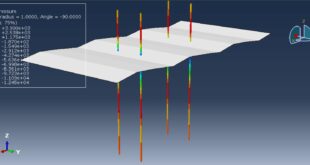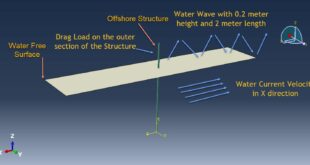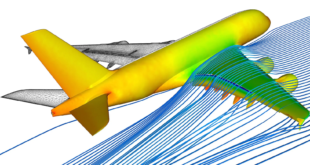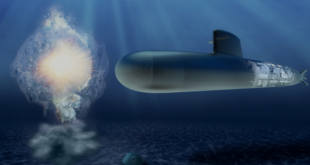In this tutorial, the Simulation CEL explosion inside the RC UHPC building in Abaqus-Damage investigation has been done The Ulta-High-Performance-Concrete(UPHC) building is modeled as a three-dimensional solid part. The reinforcements are modeled as wire part. The TNT is shpere part inside the Eulerian domain. You can see figures of the assembled parts below
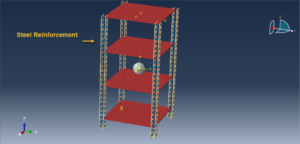
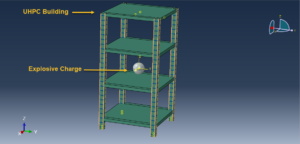
Explosions are short duration dynamic events that generate pressure waves which propagate radially from the source in space, exciting dynamic response in the structures that are encountered in their path. The pressures acting on the affected surfaces are impulsive loads that impart significant amount of energy which introduces damage-causing vibrations in the structure.Explosions are categorized based on their nature as physical, nuclear or chemical events. Explosive materials are classified according to their physical state as solids (Trinitrotoluene), liquids (Nitroglycerin) or gases (Ammonia).High explosives (HE) detonate rapidly releasing relatively large amounts of energy in the form of heat & pressure. Solid explosives such as mercury fulminate, lead styphnate, ammonium nitrate, trinitrotoluene (TNT), composition-4 (C4), research development explosive (RDX), PETN & ANFO, are primarily classified as HE
To model TNT behaviour the JWL equation of state is used.The Jones-Wilkins-Lee (or JWL) equation of state models the pressure generated by the release of chemical energy in an explosive. This model is implemented in a form referred to as a programmed burn, which means that the reaction and initiation of the explosive is not determined by shock in the material. Instead, the initiation time is determined by a geometric construction using the detonation wave speed and the distance of the material point from the detonation points
To model UHPC material, the Johnson-Holmquist model is selected, the JH-2 model assumes that the damage variable increases progressively with plastic deformation. The data are extracted from the reference papers. The elastic-plastic steel material with damage data is selected for the reinforcements
The dynamic explicit step is appropriate for this type of analysis., the reinforcement are embedded inside the concrete part. The proper boundary condition and initial state are assigned to the all parts. The mesh should be fine to obtain the better results
After the simulation, all results such as stress, strain, damage, blast wave propagation,and other resutls are available. You can see some figures for the resutls below
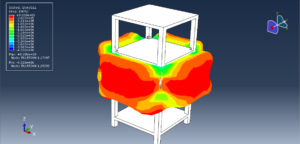
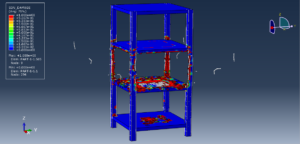
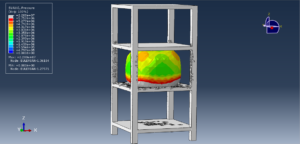
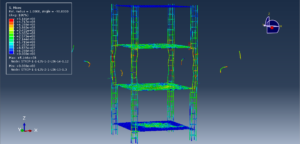
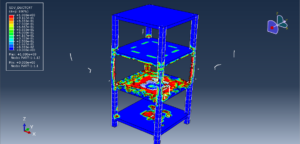
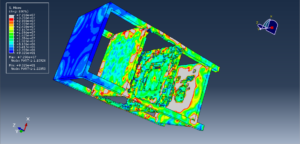
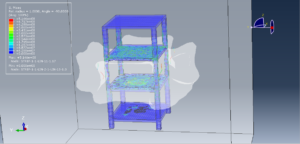
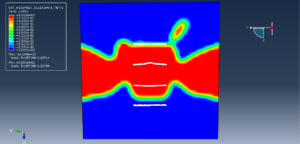
You can provide CAE ,INP,and English video files of this simulation here. The cost of these files is Thirty Euros. you can click on the bellow bottom to begin the process
You can purchase the tutorial through a PayPal account, a Visa, or a Master card, just before payment,send me an email to this address: karampourp@gmail.com
 Abaqus tutorials Abaqus tutorials
Abaqus tutorials Abaqus tutorials
